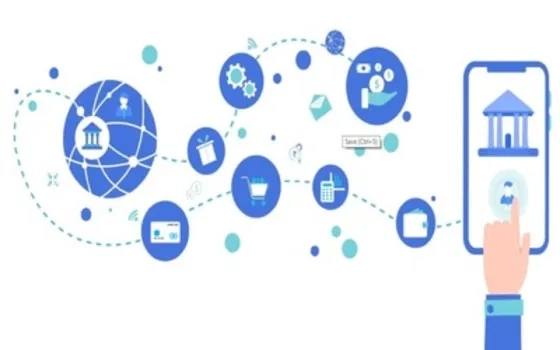Imagine a financial services start-up working with limited resources and a lean professional team. With time, the team starts bagging more prominent clients, each expecting undivided attention and personalized services.
In this situation, the company would stand to gain tremendously if it could combine its experience, expertise and skills in client management and financial services with those of a software engineer familiar with their business.
In a financial services work environment, user-friendly access to information and the ability to analyze it is critical. These factors played a vital role in the success and popularity of spreadsheets applications such as Excel, data visualisation software such as Tableau and the business analytics platform Qlik.
It also explains that the financial services industry is increasingly gravitating towards low-code and no-code. And, rightfully so as they promise business users varying degrees of independence in configuring applications or creating new ones altogether. These capabilities with short turnaround times make low-code and no-code a viable solution for financial services companies.
Low-code and no-code explained
Low-code and no-code application developments are based on the principle of isolating from code to provide the benefits of visual modeling. However, there are some fundamental differences in scale and type of applications.
No-code
NC platforms require less than 5% of the coding to be manually done and are suited for business professionals. They are mostly cloud and subscription-based, with standard uses ranging from simple reporting to applications that evolve with frequent updating. They are non-customizable, but they are very popular as they are straightforward to use, even for those with no prior knowledge or experience in coding. This provides non-technical finance professionals with an excellent opportunity to work out prototypes that match their needs and then present their ideas to IT for further development.
Low-code
On the other hand, low-code environments are a bit more complex, being designed as they are for enterprise users. They are more malleable, typically requiring up to 20% manual coding.
Like no-code platforms, low-code can be visual-based, with drag and drop features. They are open, extendable, and provide for manual coding or scripting. This allows developers to use speedy development sans the need to replicate the basic code repeatedly.
In addition, low-code platforms have scalable architectures, allowing developers to control application testing and quality and performance tooling. Developers can also extend the platform with their own code, which will enable them to create or improvise complex applications that would otherwise require experts.
Low-code platforms often include comprehensive components that let you access innovative cloud services like MI, AI, blockchain, voice and face recognition, and open-source community tools. Pre-built user-interface templates in low-code platforms allow organizations – including financial services – to use various applications ranging from mobile customer service related issues to productivity enhancements to the modernisation of legacy systems.
Similarities between low-code and no-code
They both let developers build software applications without having to write codes and allow for a visual approach to application development. This makes it ideal for many people, including tech-savvy individuals working in financial services.
Developers on both platforms can create applications with greater efficiency, thus boosting productivity. And both almost always are offered in a Platform as a Service (PaaS) form.
Need for data integration in financial services
Financial services are perhaps the most data-intensive of all the sectors in the global economy. According to an IBM study, by 2025, more than 150 zettabytes (150 trillion gigabytes) of data will require analysis.
The humongous amount of data poses a significant challenge for financial services companies; since much of it is maintained and managed in legacy systems that form data silos. These impact innovation, creating competitive disadvantages in a continually evolving industry.
McKinsey & Company projects that personalization can lead to 15% revenue growth for companies in the financial services sector. Streamlined data integration can help financial services accomplish better results.
Detection of fraud and compliance
Streaming data enables financial organizations to access it instantly, thus identifying irregularities as soon they appear. Tools such as real-time visibility, AI and MI empower the teams to identify potential risks.
Many finance companies lose the opportunity to work with to-the-minute insights due to limited integration between legacy systems and the more recent cloud platforms.
Leverage customer insights
Unfortunately, financial services companies often still operate with multiple data silos, hindering a better understanding of customers and their needs. These insights are critical for creating more personalized customer experiences.
For example, an individual customer may also be a small business owner or a key decision-maker in a larger organization. The master customer records may not reflect this complexity. But by integrating data across transactional systems, CRM, and digital marketing automation, a financial services professional can attain a 360-degree view of the customers’ profiles and engage with them in new ways.
Enhancing business applications
The financial services industry has matched pace with changes in cloud computing and mobile devices, offering customers new services such as remote deposits, online bill payments, and electronic statements.
However, most of the integration code for such applications has been built with costly custom one-time projects. Integration of processes will make extending the applications for innovations easier. And, it will enable financial services organizations to evolve existing integration code more efficiently and cost-effectively.
Application of low-code and no-code in finance
1. The broader scope of business process configuration
The application of low-code and no-code principles is a catalyst of change in how data management and analytics processes are implemented across financial services firms. The lack of standard terminologies, naming conventions, and data models between the various business processes and departments used to be a big hurdle.
Low-code and no-code principles now span the configuration of data acquisition, quality management and distribution processes and form the core of data management processes. It has evolved from being the exclusive domain of analysts. Now, any business user with a reasonably good knowledge of data management can work it out.
Low-code and no-code platforms enable data collection configuration, data quality checks and cleansing; which used to be delivered with scripts and special toolsets – to be performed through the simple use of the mouse functions.
With low-code and no-code, financial service organizations can adopt a self-service approach to data analytics, moving from the endpoint where visualisation of data and business intelligence has traditionally been carried out bang into the midst of the data management process.
2. Information provisioning for differentiating
Along with delivering low-code and no-code principles, good governance around configurations, granular permissions to control access levels, and controlled deployment from one environment to another create the right mix of rigidity and flexibility in financial organizations.
Leveraging low-code and no-code principles with the framework of processes for onboarding of new data sets to transfer offline data to an online environment; configuration of data cleansing workflows for detecting and correcting corrupt or inaccurate records; validation rules; and the shaping of data sets for easy usage by business application downstream, can drastically cut down the length of change cycles.
A robust data management application should lend itself to a wide range of formats, business rules, and delivery methods. It should be effective in tracking granular entitlements and permissions whilst monitoring the flow of information so that tracking and tracing are possible at every data point.
These capabilities facilitate business dynamism, improve decision-making time; and, allow the speedy development of applications to boost operational efficacy and sustainability. The speed at which financial services firms process data and implement it into their decision making is a critical differentiator.
3. Low-Code and no-Code and speed of delivery
Financial services firms are more focused on ensuring that their products are functional. However, as banks and other financial services companies face increasing competition from tech companies to innovate, customer retention may well boil down to efficiency. This is where low-code no-code adoption can enhance the mediocre speed of software development and delivery of innovations in services.
Low-code and no-code systems help financial services organizations streamline their software development process. They also enhance and strengthen stability against failures compared with traditional coding methods. Low-code and no-code tools can enable financial institutions to speed up their software delivery significantly, thereby offering customers innovative and more relevant products that keep them motivated about who they are dealing with.
4. Digital transformation
Low-code pre-empts active digital transformation within financial organizations. Though it primarily serves to offer speedy development processes and rollout of features, it induces software development that attracts stagnant customers more to digital banking and online transactions.
Unfortunately, digital transformation initiatives in banking have experienced multiple development bottlenecks due to static approaches. Low-code Application Platforms (LCAPs) can address these issues as they support rapid application development, implementation and management using superior programming abstractions.
Applying a low-code system allows organizations to make advances in application development due to decreased dependency on architectural realignments, proprietary and time-constraining coding, or for that matter, agonizing about security lapses. LCAPs can improve the business landscape for financial services companies through enhanced digital interaction with the customer, enabled by its rapid application development (RAD) capabilities.
5. Quick and convenient upgrades
Speedy feature upgrades and bug fixes, as well as ease of adding new components to existing applications, is possible for banks and financial organizations leveraging low-code. It has the potential to speed up software development by almost ten times. Naturally, it is cost-efficient as compared to traditional methods of consulting or forming an entire IT team.
For the customer, rapid developments enable quick onboarding experiences, be it for KYC compliances or acquiring offers.
6. Customer satisfaction
Customers often abandon transactions mid-way due to factors such as site under repairs or broken application features. These are, in a way, the customer’s feedback. And, banks often fail to use this feedback due to massive gaps between siloed departments. Low-code can integrate the business perspective with development by bridging technical and business development. Low-code platforms can significantly enhance customer experience. They reduce the number of feedback loops and speedy incorporate changes into the application software.
7. Lesser reliance on human capital
In the initial stages, low-code and no-code platforms were inspired by talent shortage and the need for accessible software. According to a study, in 2020, more than 80% of North American IT departments reported skills gaps.
IT managers are constantly looking for experts who understand both the business aspect and the software development requirements. This isn’t easy and a drain on the time and money resources in retaining such high-value skills inside the organization.
Low-code platforms are more affordable than traditional development platforms. The reusable components, drag and drop features, and template-oriented development of low-code allows even low-skilled developers to implement required changes.
Low-code IDE (Integrated Development Environment) offer a user-friendly and visual interface for cross-platform development.
8. Customization
According to Gartner, brands risk losing 38% of customers because of poor personalisation efforts. Low-code platforms allow customisation based on the client’s preferences and the business’s interests. A less rigid development environment allows independent personalisation while removing the security issues inherent in custom code.
Conclusion
Looking at the evolution in the financial data management sector, it is clear that different elements, including technology, process design and data onboarding, are connecting to bring analytics and data on the same page. Low-code and no-code is the enabler, ensuring that business users are equipped with the required information.
For financial institutions, this spells a new world of opportunity. A world where they can maximize data ROI, quicken decision-making, and facilitate user enablement.
When it comes to choosing between low-code vs no-code, companies could ask themselves the following question to ensure that their interests are met:
– How does this solution support and facilitate business and IT communication and collaboration in my organization?
– Will the collaboration be an integration or addition?
– How do the solutions help business and professional developers build applications?
– Will specialist developers be able to improve the solution and deliver custom design language codes in a sustainable format?
There’s more than just the technology to consider when deciding which option to go ahead with. Enterprises should opt for a platform that addresses their critical business issues, seamlessly and securely. The platform also needs to integrate with external vendors and data sources, and should be scalable sustainably to meet future challenges.
















